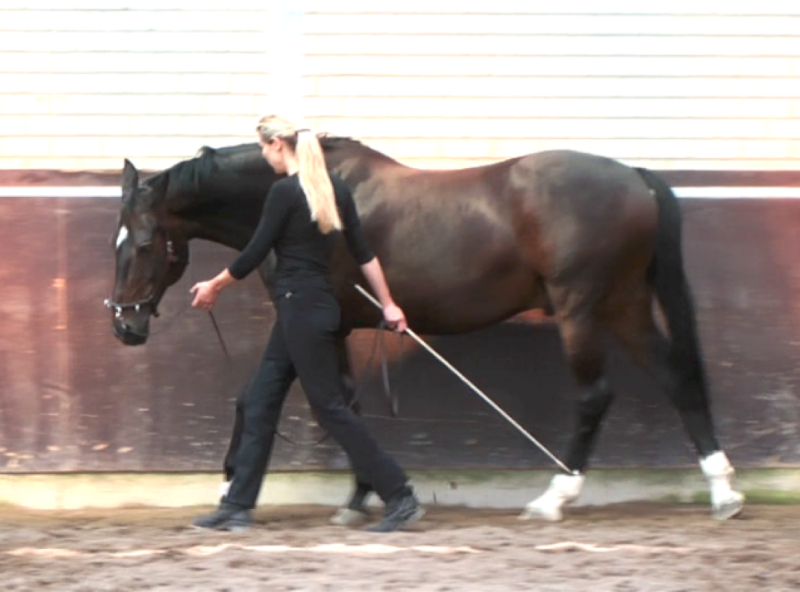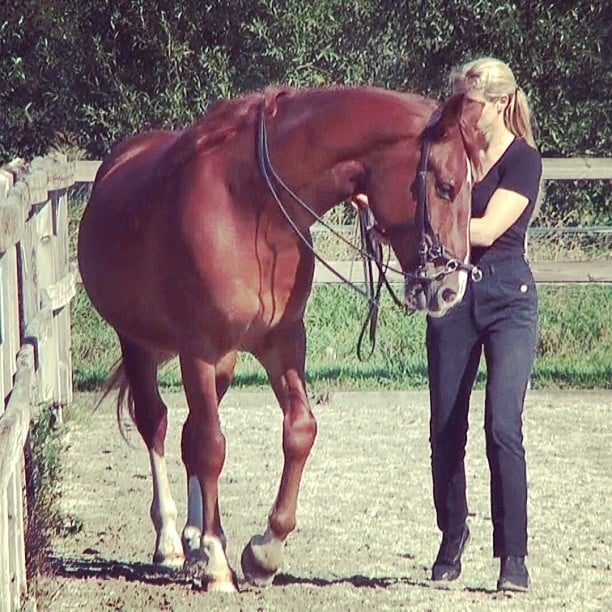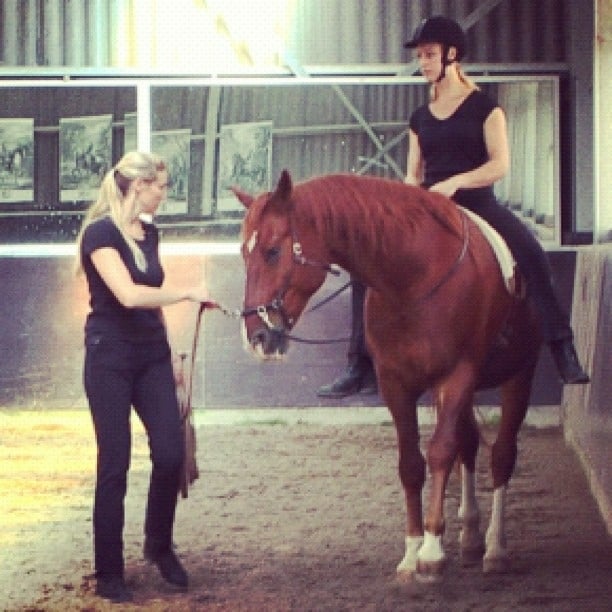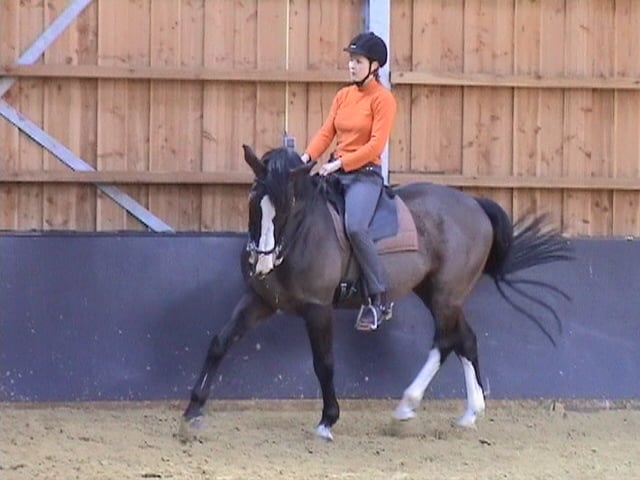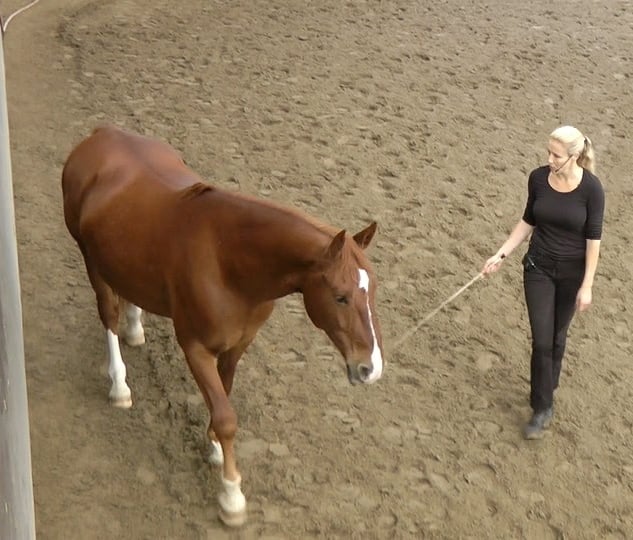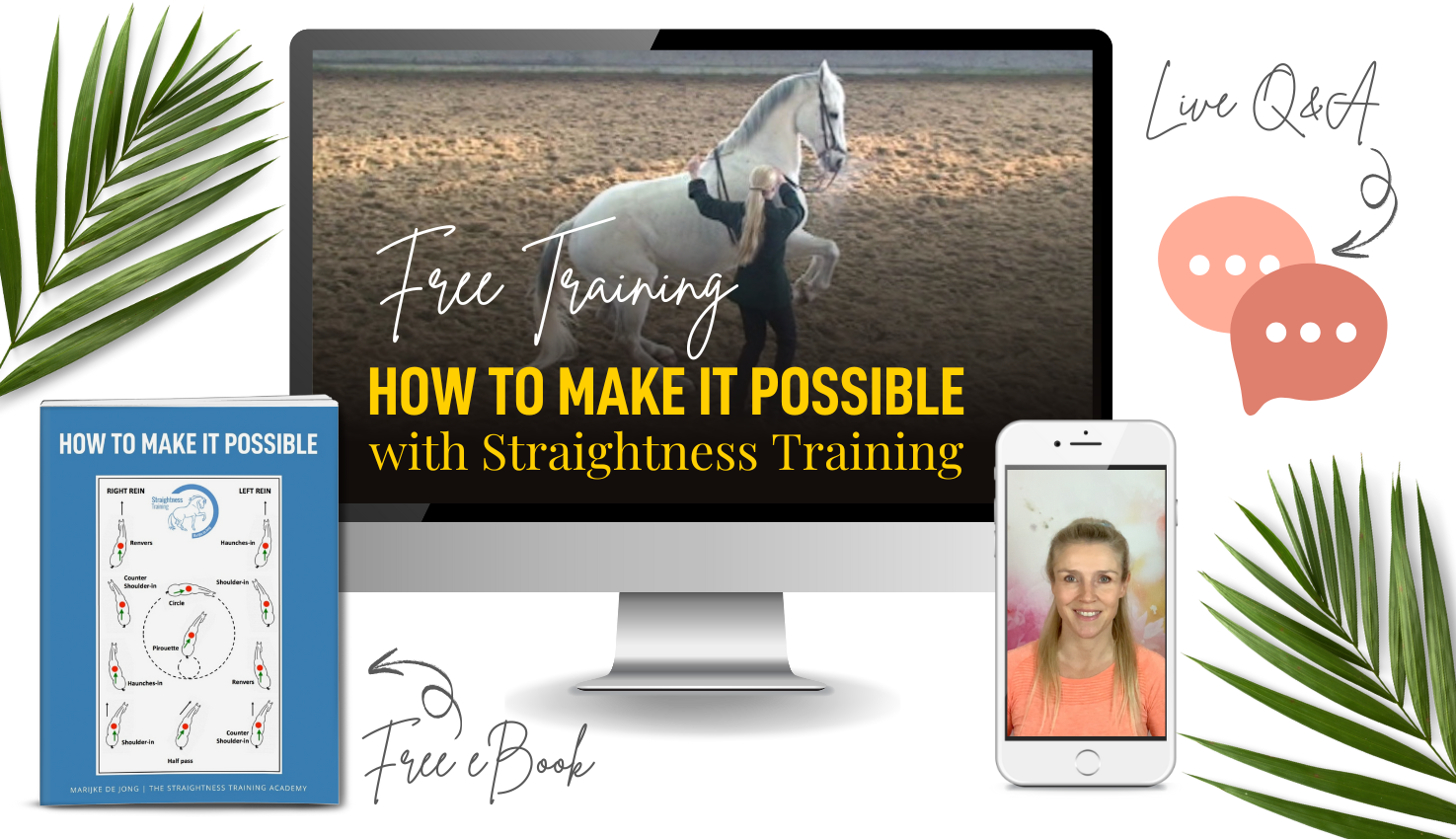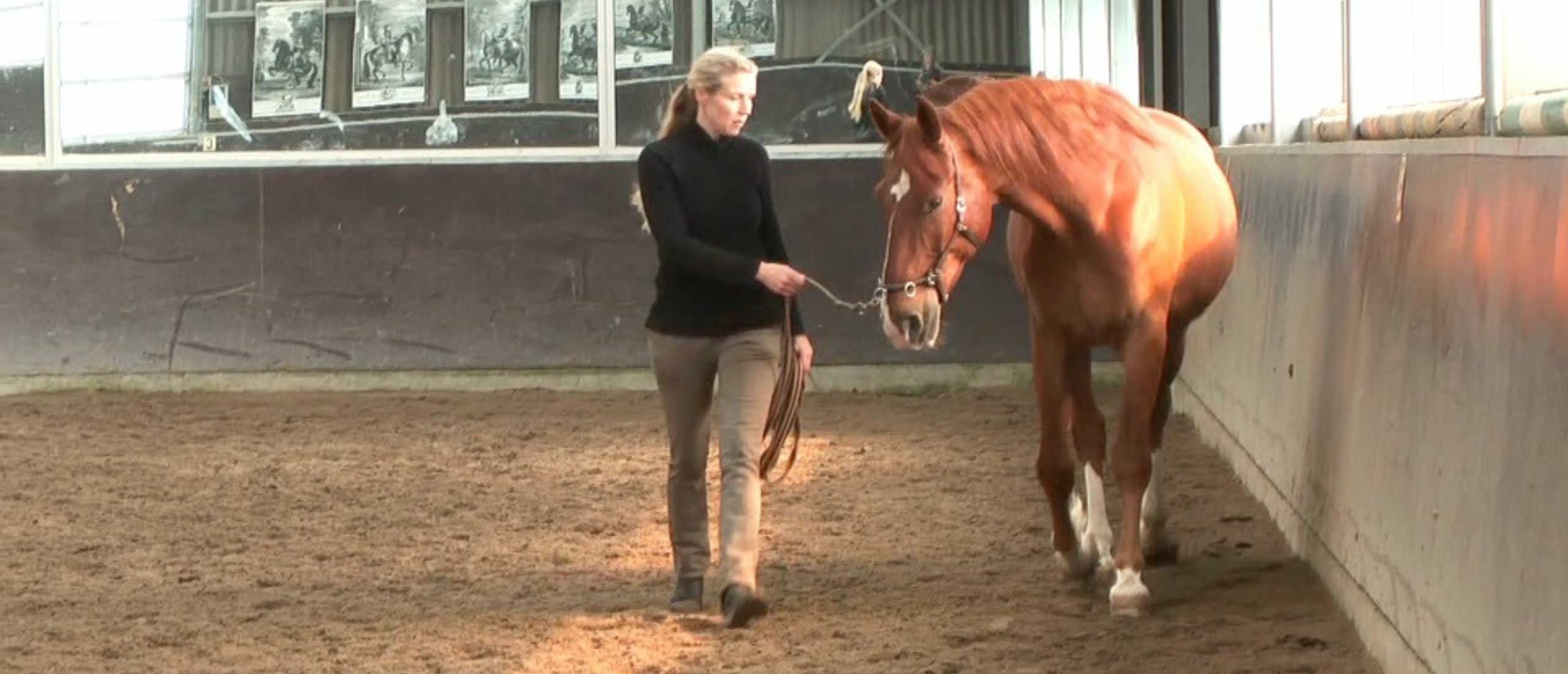
Shoulder-in
Shoulder-in is an important exercise your horse should learn.
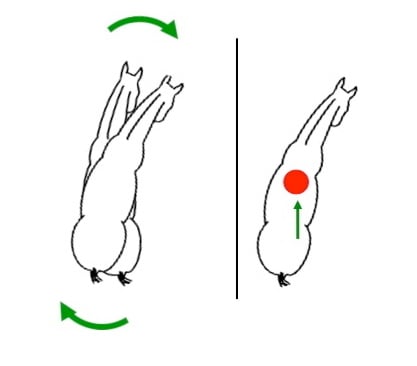
The long term goal of Straightness Training is achieving flexibility, gaining strength, build muscle and improving your horse’s overall health and maintaining it for a lifetime.
This goal is achieved through a logical system of progressive exercises.
And the exercise shoulder-in is one of the cornerstones.
Definition
In shoulder-in, the horse walks in a forward-sideward movement, in which the body is bended laterally from neck to tail. Shoulder-in is a side movement on three or four tracks.
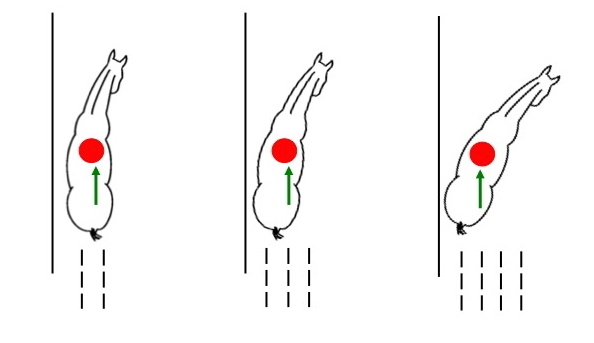
- A horse moves in ‘bended straight’ (not on the picture) when the inside hind leg steps into the track of the inside front leg . The horse moves in the so called ‘canter position’ where both inside legs are aligned.
- Shoulder-fore (picture on the left) is done on 2 tracks and the inside hind leg is stepping between the tracks of the forelegs. the horse moves in the so called ‘trot position’ where both outside legs are aligned. Steinbrecht also calls this the ‘plie’.
- In competitions the shoulder-in is done in 3 tracks (middle picture) The inside front leg walks in one track, the inside hind leg and outside front leg walk on one track and the outside hind leg walks on one track.
- In the classical art of riding the shoulder-in is also done on 4 tracks (right picture). In this exercise the horse bends even further making both front legs walk on two different inside tracks.
Now in ST it can also be done 2,5 or 3,5 or 3,67 or 3,999 tracks ). The amount doesn’t matter. What matters in ST is that you choose the amount where your horse can support his body and center of mass best with both hind legs. And that depends on the conformation of your horse, if he has a long back or a shorter one, if he has long legs, or shorter ones, if he has a long neck or a short one. Just do the amount bend and the amount of tracks where he can move in optimal balance.
So in ST it’s always the essence that counts, not the ‘names’ nor the ‘tracks’, nor the amount of bending. It’s never ‘absolute’, always relative, because it depends on the individual horse.
History
Shoulder-in was invented by the Duke of Newcastle (1658) and was in those days done on the circle. The great riding master François Robichon de la Guérinière (1733) performed the exercise (L’Epaule en dedans in French) on the straight line. Other masters in history named the exercise
- the corner stone of dressage
- the pillar of the art of riding
- the mother of all exercises
- and even the aspirin of riding, because the exercise was supposed to solve all riding problems.
Goal
The goal of shoulder-in is to teach the horse to step under the point of weight with its inside hind leg.
The benefit of the exercise lies in the increased bending of the inside hind leg and the increase of shoulder freedom in the outside shoulder, because the outside shoulder is supported by the inside hind leg.
By stretching the outer back muscles it increases the will to accept and soften in the outer rein.
The shoulder-in has great value because it counters the natural crookedness and makes the horses equally supple to the left and right.
Teaching the exercise to the horse
In straightness training, all side movements are first taught to the horse in hand. This teaches the horse to move in lateral movements and find its balance without the additional weight of the rider. in every step writen below, at first, a few steps are enough. When the horse gradually becomes stronger we can ask for more steps.
| First we teach the horse to perform LFS on a straight line. |
| Gradually we ask the horse to bring the shoulders more in. |
| Later on, the horse will execute the exercise under the rider. |
| If the horse can do it in walk, we can ask for trot. |
| The exercise can also be performed at liberty. |
Variations
- Shoulder-in can be ridden on the straight line along the wall of the arena, but also in a circle
- To test whether the horse is properly responding to the outside rein and is not falling on the inside shoulder, halfway through the long side a little circle can be added to the exercise.
- By making a shoulder-in in every corner of the arena, the horse is prevented from “cutting the corners”.
- The exercise can be done is walk, trot and finally also in canter. Especially when doing straightness training in canter, the shoulder-in is extremely valuable.
- To prepare for the shoulder-in, the horse can be ridden in a small circle or through a corner. This will help get the proper lateral bending for the exercise.
- The exercise can be ended by making a circle or by placing the shoulders back in front of the hips.
Stepping under or taking weight?
Stepping under the center of mass doesn’t automatically mean the horse will take weight on that leg. It depends on the ‘lever’ in front: The more forward down, the less weight on the hind leg, the more forward updward and the more collection the more weight in behind.
So the shoulder-in can be performed with and without taking weight on the inside hind leg.
However, the true purpose of shoulder-in is to free the outside shoulder, so once the horse understands the exercises, it’s best to shift the weight direction inside hind leg to free the front, so you can get to the real essence of the exercise.

